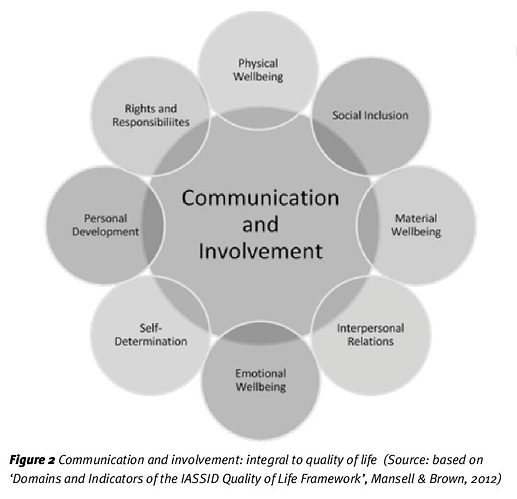Continuing the discussion from Communicate with Me!:
Currently, there is a range of support options for people with learning disabilities. Traditionally, the majority of people will receive support from services throughout their lives, to a greater or lesser extent. These services may include school or college, play and leisure services, residential or short break services, day services or supported employment. People may also be included in community circles of friends and other unpaid natural support. Increasingly, people with learning disabilities access personalised support which they may manage, with varying degrees of help from other people, as well as using a greater range of community settings.
The nature of support provided by each of these options may be different but all communication partners share the same challenge. Because the proportion of people with learning disabilities who experience difficulties in communicating is so high, the challenge is to effectively meet people’s communication needs and involve them in their lives and their communities.
How a person is supported to communicate and be involved in their lives can greatly impact on that person’s quality of life. It follows, then, that the ability of the communication partner to support effective communication and involvement is central to an improved quality of life
Consider the above domains of quality of life.
How do you support people to communicate about, be involved in or understand different parts of thier life?
